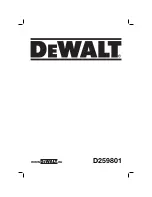
CAUTION
Never apply the service and spring parking
brakes simultaneously. To do so transmits exces-
sive input force to the brake components, which
could damage or cause eventual failure of brake
actuating components.
Meritor WABCO
®
Antilock Braking
System (ABS)
(Fig. 6.4)
The Meritor WABCO
®
Antilock Braking System (ABS)
is an electronic wheel speed monitoring and control
system that works with the standard air brake sys-
tem. ABS passively monitors vehicle wheel speed at
all times, and
controls
wheel speed during emer-
gency stops. If equipped with Automatic Traction
Control, wheel spin is controlled during reduced-
traction situations. In normal braking applications, the
standard air brake system is in effect.
IMPORTANT: For proper ABS system operation,
do not change tire sizes. The sizes of the tires
installed during production are programmed into
the electronic control unit. Installing different
sized tires could result in a reduced braking
force, leading to longer stopping distances.
ABS includes signal-generating tone wheels and sen-
sors located in the wheel hubs of each sensed
wheel. The sensors transmit vehicle wheel speed
information to an electronic control unit (located in a
panel behind the driver’s seat). The control unit’s
main circuit interprets the speed sensor signals and
calculates wheel speed, wheel retardation, and a ve-
hicle reference speed. If the calculations indicate
wheel lockup, the main circuit signals the appropriate
solenoid control valve to reduce braking pressure.
During emergency braking, the solenoid control valve
alternately reduces, increases, or maintains air pres-
sure supply in the brake chamber to prevent front
and rear wheel lockup.
If equipped with Automatic Traction Control, an addi-
tional solenoid valve is installed. During reduced-
traction situations, the valve increases or reduces air
pressure supply in the brake chamber to provide bet-
ter traction whenever wheel spin occurs.
The electronic control unit also has a safety circuit
that constantly monitors the wheel sensors, traction
control valve (if equipped), solenoid control valves,
and the electrical circuitry.
After the ignition switch is turned on, the tractor
warning light (TRACTOR ABS) and, if equipped with
Automatic Traction Control, the wheel spin (WHEEL
SPIN) indicator light come on for about three sec-
onds. After three seconds, the warning lights go out
only if all of the tractor’s ABS components are work-
ing.
The wheel spin (WHEEL SPIN) indicator light comes
on if one of the drive wheels spins during accelera-
tion. The light goes out when the wheel stops spin-
ning. When the light comes on, partially release the
throttle pedal until the light goes out. If slippery road
conditions continue, engage the axle lock.
CAUTION
Axle lock should only be engaged when the ve-
hicle is moving slowly at low throttle. Engage-
ment at high speed or power can damage the
axle(s).
Do not engage the axle lock while the WHEEL
SPIN light is on. To do so could damage the rear
axle. Refer to
Chapter 9
for axle lock instructions.
Vehicles with electronic engines and ABS may have
automatic traction control (ATC). On these vehicles,
the ATC system automatically limits wheel spin dur-
ing reduced-traction situations.
If the vehicle has ATC, there will be a momentary
contact rocker switch on the dash labeled NORM/
SPIN and ATC.
When the ATC system is in the NORMAL mode, it
will apply gentle braking to the spinning wheel, to
feed power to the wheel(s) with better traction. If
both wheels are spinning, the system will signal the
electronic engine to reduce power.
Pressing NORM/SPIN will temporarily allow more
drive wheel spin to help burn through a thin layer of
FASTEN SEATBELTS
0000432 MILES
2
f601125
04/02/96
1
1.
Tractor ABS Warning
2.
Wheel Spin Indicator
Fig. 6.4, ABS Dash Lights
Steering and Brake Systems
6.4










































